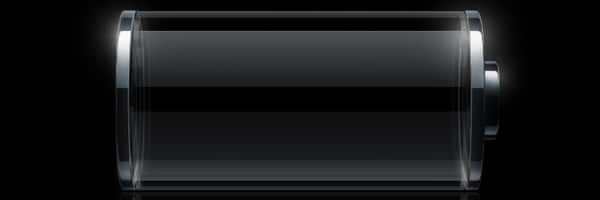
In 2007, the launch of the iPhone heralded in a new era — that of the smartphone. It’s been more than 10 years since that moment, yet smartphone battery technology continues to lag behind the innovative tech that developers at Apple, Google and Samsung are bringing to their line of smartphones, from FaceID to Google Assistant. And with the increasing screen size of cell phones, as well as their powerful CPUs, battery power is becoming more critical to consumers.
So, when will smartphone batteries improve?
Smartphone Battery Technology Delays
Before diving into the “when,” let’s take a step back and look at the “why,” because there are several causes behind the delay in smartphone battery technology, including:
- Competition: While it may seem like developers are dragging their feet in improving smartphones, the truth is there are tons of start-ups researching alternatives to the traditional lithium-ion batteries of smartphones. Many, however, are competing with one another for investments and grants, which leaves them underfunded. And when it comes to the leading producers of lithium-ion batteries, like LG and Samsung, their focus is on improving their existing battery technology versus abandoning it entirely.
- Safety: As Samsung demonstrated with the Galaxy Note 7, batteries can pose a significant safety risk. That’s why any smartphone battery technology must undergo extensive testing before becoming available to the public. For many leaders in the industry, such as Apple, it’s also a risky move to integrate new battery technology into their iPhones — because if anything goes wrong, their brand takes the damage.
- Cost: Developing, testing and manufacturing batteries is an expensive endeavor. In fact, to research a new smartphone battery and build a small-scale manufacturing line for it would cost at least $500 million. And guess what? On average, start-ups with a focus on next-generation battery technology receive $40 million from investors.
Due to these factors, as well as a general disinterest among producers of smartphone batteries to revitalize their technology, the area’s stalled in development — almost.
The Future of Smartphone Battery Technology
While the answer to, “When will smartphone batteries get better?” seems bleak, cheer up. Several companies are making headway in smartphone battery technology, including:
- Bioo: The goal of Bioo is simple: make charging your phone as green as possible. This next-generation battery technology uses photosynthesis to charge not only your smartphone but also your tablet. Via a planter pot, which features a USB port, you can plug in your phone and power up two to three times a day.
- Nanowire: While lithium-ion withstands 1,000 charges before degrading, nanowire batteries endure more than 200,000 charges. This smartphone battery technology is also a thousand times thinner than a human hair, which could mean the development of even trimmer phones, tablets and other devices.
- Ionic: By combining the features of lithium-ion batteries and alkaline batteries, Ionic Materials promises to deliver a smartphone battery that’s safer, as well as more cost-effective and efficient than lithium-ion batteries. The signature feature of the company’s battery is its fire-retardant plastic instead of a liquid.
- Ryden: While not as long-lasting as nanowire batteries, manufacturers can produce Ryden dual-carbon batteries at the same plants as lithium-ion batteries, which eliminates the overhead of manufacturing new smartphone battery technology. Other advantages include their ability to charge 20 times faster than lithium-ion batteries.
- Li-Air: Also known as lithium-air batteries, this technology holds more than 40 times the charge of lithium-ion batteries. The downside, however, is that li-air batteries begin to lose their charge capacity after a few dozen cycles. Additional research could see this tech, which draws in oxygen to discharge energy, become a viable option.
- StoreDot: If you’d like to charge your phone in 30 seconds and are wondering when battery technology will improve, the wait is over. With StoreDot, you can power up your phone with biological semiconductors, which consist of amino acids. It sounds complicated, but the results are real.
- Solid-State: The solid-state batteries developed by MIT outdo both lithium-ion and nanowire batteries. Instead of degrading after 1,000 or 200,000 chargers, solid-state batteries last for hundreds of thousands of cycles, plus eliminate the flammable liquid found in lithium-ion batteries.
While it may seem like years before smartphone batteries will last longer, the efforts by the above companies demonstrate that change is coming.
Learn More About Smartphone Battery Technology
At The Whiz Cells, we specialize in smartphones. As an electronics recycler, our goal is to extend the life of smartphones and reduce e-waste by purchasing and reselling phones at competitive prices. Whether you’re interested in learning about smartphone battery technology or trading-in your smartphone to upgrade, we can help. Just browse our blog for the latest tech news or explore our shop to check out our latest phone offers!
